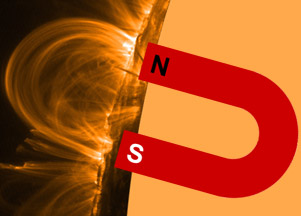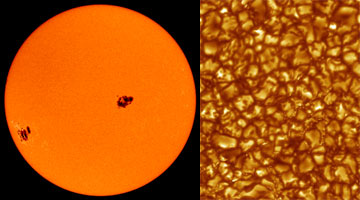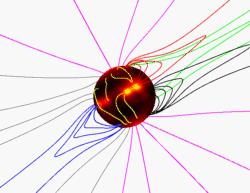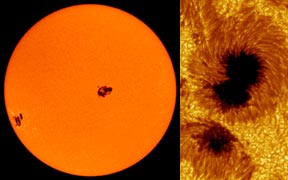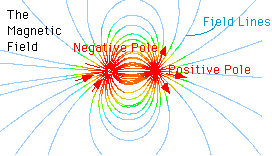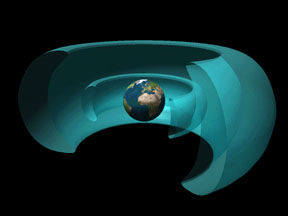Animation courtesy of NASA/Walt Feimer, Max-Q Digital.
Journey Beneath a Sunspot
This movie takes us on an imaginary flight beneath the surface of the Sun. At the start, we are looking down at an active region on the photosphere. The photosphere is the visible "surface" of the Sun. Looping magnetic field lines are shown as silvery-white tubes. The magnetic field loops rise out of one sunspot and go back down in another. Sunspots are darker areas on the Sun's surface. Sunspots have very powerful magnetic fields that prevent hot plasma from flowing into them. This makes the sunspots cooler and darker than their surroundings.
Zooming in, our pretend flight takes us under the photosphere to the upper parts of the Sun's interior. Astronomers use a technique called helioseismology to study the interior of the Sun. By observing the motion of pressure waves on the Sun's surface, they can figure out what is going on underneath. On our imaginary flight, we see bundles of looping magnetic field lines rise from the depths and "break" the surface, creating sunspots at the photosphere.
As we once again rise above the surface, we see one loop of a magnetic flux "rope" narrow and then get "pinched off". This is called magnetic reconnection. Like an overstretched rubber band that snaps, magnetic reconnection releases lots of energy. This movie shows the energy release producing a solar flare - a sudden brightening of the photosphere below. It also creates a coronal mass ejection (CME) - a swarm of energetic particles that blasts upward into space.
Right-click (Windows) or Option-click (Mac) on one of the following links to download a copy of this video in either the QuickTime (6.1 MB) or MPEG (5.9 MB) format.






